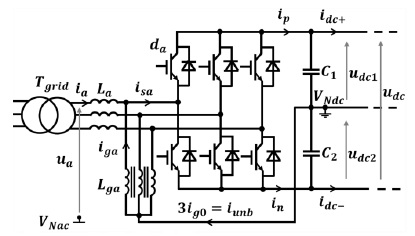- ALL COMPUTER, ELECTRONICS AND MECHANICAL COURSES AVAILABLE…. PROJECT GUIDANCE SINCE 2004. FOR FURTHER DETAILS CALL 9443117328


Projects > ELECTRICAL > 2017 > IEEE > POWER ELECTRONICS
A new three-phase active rectifier topology is proposed for bipolar dc distribution, which can achieve the independent dc-pole control, with only one two-level voltage source converter and an ac-side grounding inductor. The averaged large-signal model and linearized small-signal model of the rectifier are derived in the stationary reference frame. Moreover, a control system is proposed with proper controller parameters. Besides, the rectifier is tested on an experiment platform. Comprehensive experiment results are given and analyzed to validate the function of the proposed rectifier under different operation conditions, including the rectifier start-up performance, rectifier dynamics with unbalanced dc loads for two poles, and rectifier dynamics with asymmetrical dc voltages for two poles. Finally, the proposed rectifier is compared with other two existing ac-dc conversion approaches, in terms of required number and rating of components as well as power losses with different load imbalance levels, which further highlight some potential benefits of the proposed topology.
Stabilization Techniques.
A new three-phase active rectifier topology for bipolar dc distribution has been proposed and analyzed. This topology has the ability to feed two dc poles independently and control two dc-pole voltages actively, by using an ac-side three-phase coupled grounding inductor to achieve the current injection to the dc neutral line. The proposed rectifier has been tested on an experiment platform. Compared with other two existing ac-dc conversion approaches for bipolar low-voltage dc distribution, the proposed topology uses less IGBTs and potentially holds less power losses when feeding unbalanced dc loads. But meanwhile, the coupled grounding inductor is required with high αβ-sequence inductance and low zero-sequence resistance, which closely influence the efficiency of the proposed topology.
Proposed rectifier topology
